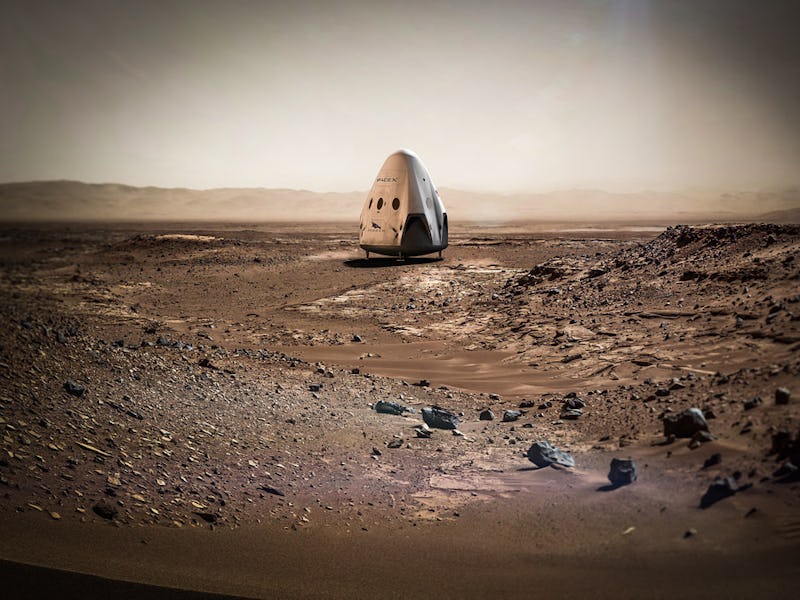The SpaceX Red Dragon mission is something to behold. Elon Musk and his squad plan to send an uncrewed-but-badder version of the Dragon to Mars in 2018, and land it on the surface of the planet using a new technology called supersonic retropropulsion. What doesn’t always get spelled out in these descriptions is the fact that NASA is playing a critical role in helping to make this mission happen.
In a teleconference on Wednesday, Phil McAlister, NASA’s director of commercial spaceflight development, discussed what NASA’s partnership with SpaceX means for making this mission a success.
To sum up: Red Dragon would not happen if it weren’t for NASA.
NASA’s role in helping the mission take off (ha!) began late in 2015. The agency and the private spaceflight company were already used to working together for resupply missions to the International Space Station, but Elon Musk has always said the ultimate goal for SpaceX has been to get humans to Mars, and yes, establish a human colony on Mars. So, the company decided to reach out to NASA to see if it would lend its expertise and resources to the company for the Red Dragon mission.
“[SpaceX] realized they could really utilize and benefit from an expanded level of assistance from NASA,” McAlister said.
Of course, McAlister, representing the agency, wouldn’t go as far as to make that proclamation. “We’re kind of like a consultant to SpaceX,” he said at the teleconference. “We’re providing very specific areas of expertise.”
That includes access to deep space communication systems courtesy the Deep Space Network; Mars relay support; navigational support to the red planet; systems analysis regarding entry, descent, and landing; and planetary protection consultation and advice.
McAlister actually believes that SpaceX could actually do all of this (save for deep space communication) if they had been given the time to R&D all of the issues at hand. But working with NASA speeds things up by nearly a decade.
And that’s critical when you realize what NASA gets in return for this partnership: access to data about Red Dragon’s launch, entry, descent, and landing — especially when it comes to the supersonic retropropulsion technology. These are things that “wouldn’t be available to us in any other means,” said McAlister.
And NASA needs this data. Any Mars mission the agency greenlights needs to basically have a 100 percent certainty for success — that’s just the way government institutions have to operate. Moving forward for a 2040 deadline to send humans to the planet, NASA will need to use these numbers to plan their own missions out. And they’re getting this information “a decade sooner and at a small fraction of the cost,” said McAlister.
“This is a key first step for us,” he said. “Even with the possibility of failure…[NASA felt] like this was a good investment for us.”
While the flight data would stay with NASA and only be made available to other companies or agencies in certain instances, the science data from the mission would be made open access for the world. While SpaceX will be the most prominent winner if Red Dragon is a success, NASA and the rest of the world will get to reap some of the benefits as well.
It might seem strange that NASA is helping SpaceX with its Mars plans — especially when the company has made it clear it hopes to beat NASA in sending astronauts to the planet. But neither party really sees it as a competition — one player’s success is the other’s too.
“It’s not just NASA’s journey,” said McAlister. “We’re going to Mars as a nation. A partnership just makes perfect sense.”
